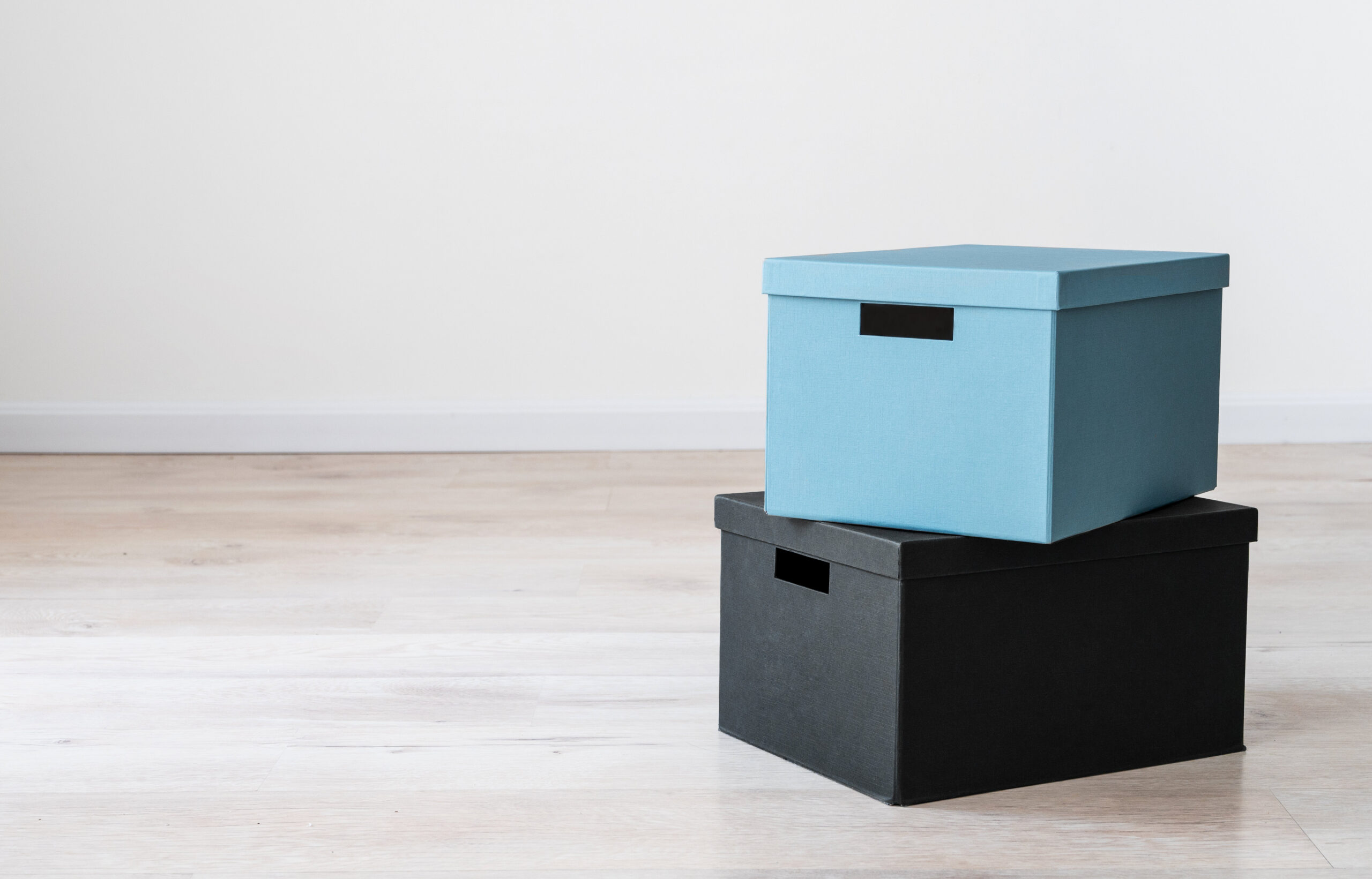The Importance of Decluttering in the Digital Age
In today’s fast-paced digital landscape, the importance of decluttering cannot be overstated. With an overwhelming amount of information at our fingertips, individuals and organizations often find themselves navigating through a maze of files, emails, and digital workflows. This chaotic environment can significantly hinder productivity and negatively impact mental well-being. When vital documents are buried under layers of disorganization, the ability to retrieve information quickly becomes a daunting task, leading to frustration and wasted time.
A disorganized digital space often translates into diminished focus and increased stress. The constant exposure to clutter can create a sense of cognitive overload, making it difficult to prioritize tasks and concentrate on the work that truly matters. Moreover, an environment rife with digital clutter can impair decision-making processes, as individuals may feel overwhelmed by the sheer volume of information available. Thus, it is essential to develop effective strategies for organizing files, emails, and workflows to mitigate this chaos.
Embracing decluttering as a core practice in the digital age can yield numerous benefits. A streamlined organization system not only enhances efficiency but also fosters a sense of control and tranquility. By reducing visual clutter and improving accessibility, productivity can be maximized, allowing for a more focused workflow. In addition, a clean digital environment can lead to improved creativity, as individuals are better able to think clearly and approach tasks with renewed energy.
Ultimately, recognizing the necessity of decluttering in the digital realm is the first step towards achieving a more organized and productive life. By understanding the implications of digital disarray, individuals can pave the way for adopting the methods that will follow in this blog post. Establishing a well-structured digital ecosystem is crucial for success in our increasingly complex world.
Assessing Your Current Digital Landscape
In the journey towards effective decluttering, the first crucial step is assessing your current digital landscape. This process aids in identifying the files, emails, and workflows that require organization. Begin by conducting a comprehensive inventory of all your digital assets. This includes not only files on your computer but also those stored in cloud services, external drives, and email accounts. Making a detailed list of these assets helps in establishing a baseline for what exists and what needs attention.
During this inventory, categorize your digital assets into clearly defined groups. For instance, consider breaking them down into documents, spreadsheets, presentations, emails, and multimedia files. This categorization will allow you to visualize the extent of your digital footprint and will highlight areas that are overcrowded or disorganized. As you assess each category, take note of files that are outdated, duplicates, or no longer needed, marking them for potential deletion or archiving.
Another vital aspect of this assessment is identifying workflows that may be inefficient or cluttered with unnecessary steps. Reflect on your daily tasks and consider how many of them require excessive navigation through disorganized files or emails. This evaluation not only brings clarity to your digital landscape but also reveals opportunities for automation or the implementation of more streamlined processes.
Furthermore, it is important to involve key stakeholders if you are working within a team environment. Gather feedback on shared digital spaces, ensuring that everyone’s insights are incorporated into the assessment. This collective understanding can lead to more effective decluttering solutions that meet the needs of all parties involved.
By conducting a thorough self-assessment of your digital landscape, you set a solid foundation for the decluttering process. It provides clarity on what needs to be addressed, allowing for informed decisions as you move forward in creating an organized digital environment.
Step 1: Decluttering Your Files
In the digital age, managing files efficiently is crucial for productivity and organization. The first step in decluttering your files is establishing a clear folder hierarchy. Start by identifying the main categories relevant to your work or personal projects. These categories could include finance, projects, client information, and personal documents. Once you have defined these primary categories, create subfolders to house related documents, ensuring that each folder remains focused and manageable.
A significant component of effective digital organization is the implementation of consistent naming conventions. This practice aids in quick identification and retrieval of files. Use clear and descriptive titles that include pertinent details such as the project name, date, or document type. For example, renaming a file as “2023_ProjectProposal_ClientName” is far more informative than “Document1.” This method enhances clarity and cohesiveness within your digital filing system, minimizing the time spent searching for specific files.
Regular maintenance and review of your digital files are essential components of a successful decluttering strategy. Schedule periodic audits, perhaps monthly or quarterly, to assess the relevance of your existing files. During these reviews, delete unnecessary or outdated documents that no longer serve a purpose. Archiving older files that may not be needed immediately, but are still important, is another practical approach. Consider using cloud storage solutions for this purpose, allowing you to free up local space while keeping essential information accessible.
By implementing a systematic approach to organizing digital files through these strategies, individuals can greatly enhance their productivity and reduce stress associated with disorganization. Cultivating the habit of maintaining an organized digital space not only facilitates immediate access to important information but also lays the foundation for effective workflow management in the longer term.
Step 2: Organizing Your Email Inbox
Organizing your email inbox is a critical step in the decluttering process, as it directly impacts your productivity and communication. An unorganized inbox can lead to missed messages, increased stress levels, and inefficiencies in your workflow. To effectively tackle this task, begin by categorizing your emails into specific folders. You may choose categories such as ‘Work,’ ‘Personal,’ ‘Projects,’ or ‘Subscriptions.’ The categorization will help streamline your email management and allow for easier navigation when searching for important messages.
Next, consider setting up filters that automatically sort incoming emails based on predefined criteria. Most email platforms offer robust filtering options that can direct emails to corresponding folders, ensuring that your primary inbox remains focused on urgent correspondence. For instance, you can create a filter to send all emails from your team members directly to a ‘Work’ folder, reducing clutter in your main inbox. This proactive approach allows you to prioritize your attention where it’s needed most.
Another effective technique is the ‘two-minute rule,’ which encourages you to address any email that requires a response of two minutes or less immediately. This practice prevents small tasks from accumulating and maintains a clear and manageable inbox. If an email demands more than two minutes of your time, consider scheduling a time to tackle it later, instead of leaving it unresolved in your inbox.
By implementing these strategies—categorizing emails, applying filters, and using the ‘two-minute rule’—you can significantly reduce inbox clutter. A well-maintained inbox not only enhances your communication but also fosters a more organized and less stressful work environment, boosting overall productivity. Regular maintenance of your email will ensure it remains an asset rather than a source of distraction.
Streamlining Your Workflows
In today’s fast-paced working environment, streamlining workflows is essential for maximizing productivity and maintaining organization. Evaluating and optimizing daily processes can significantly enhance efficiency and effectiveness in managing tasks. One key aspect of this process is prioritization. By identifying high-impact tasks and categorizing them based on urgency and importance, you can allocate your time and resources more effectively. This prioritization helps minimize the risk of burnout while ensuring you meet deadlines.
Establishing a task management system is another vital step towards improving your workflows. Utilizing digital tools such as project management software can provide a centralized platform to outline, track, and adjust tasks and deadlines. These systems allow for collaboration, as team members can easily share progress and communicate changes, which reduces misunderstandings and fosters a smooth workflow. Tools such as Trello, Asana, or Notion can facilitate this process and enhance team collaboration.
Moreover, incorporating automation into your daily tasks can substantially reduce the burden of repetitive activities. Automating routine actions, such as email responses or report generation, frees up time to focus on more strategic undertakings. Consider using tools like Zapier or IFTTT to create automated workflows that can link various applications, thus streamlining processes further. Additionally, it is crucial to establish clear guidelines that outline the steps and responsibilities involved in each workflow to minimize ambiguity and miscommunication.
Lastly, to create a workflow that minimizes distractions, establish periods of focus time where interruptions are limited. Use techniques such as the Pomodoro Technique to maintain concentration and break tasks into manageable intervals. By integrating these strategies, you can create an organized and efficient workflow that significantly enhances productivity and encourages a more structured approach to achieving your goals.
Implementing Immediate Code for Clean Logic
In the realm of decluttering, particularly within digital environments, the concept of ‘immediate code’ plays a crucial role in organizing files, emails, and workflows systematically. Immediate code refers to the practice of applying clear and logical frameworks to decision-making processes, ensuring that actions taken during the decluttering phase are both prompt and effective. This method hinges on establishing a set of guidelines or principles that can facilitate swift decisions regarding what to keep, what to discard, and how to categorize digital items.
The first step in implementing immediate code is to outline a clear rationale for organization. This could include criteria such as frequency of use, relevance to current projects, and historical significance. By categorizing materials under these standards, individuals can make informed choices without becoming overwhelmed by the sheer volume of digital content. For instance, emails could be sorted into categories such as ‘Urgent’, ‘Follow-up’, and ‘Archive’, establishing logical pathways for future reviews and actions.
Additionally, applying immediate code entails developing a systematic approach to file management. This could involve creating a standardized folder structure that mirrors the workflows within an organization or personal system. By ensuring that the hierarchy and naming conventions are intuitive, users can easily navigate their digital spaces. Furthermore, employing decluttering techniques such as the ‘two-minute rule’—wherein any task that can be completed in two minutes should be addressed immediately—can drastically reduce the backlog of digital clutter.
Ultimately, the application of immediate code fosters a mindset focused on efficiency and sustainability in decluttering practices. By implementing this logical framework, individuals can maintain organized digital spaces, facilitating ongoing productivity and minimizing the tendency to accumulate unnecessary files and emails once again.
Maintaining Your Decluttered Space: Best Practices
Once a digital space has been successfully decluttered, it is crucial to establish practices that will help maintain this newly achieved organization. The first step involves conducting routine audits of your digital files and email. Regular checks allow you to identify and remove redundant items or outdated information, significantly reducing the likelihood of clutter reoccurring. Scheduling these audits on a weekly or monthly basis ensures that maintenance becomes a part of your regular workflow, rather than an afterthought.
Incorporating scheduled decluttering sessions can prove beneficial as well. By dedicating a specific time each week or month to focus solely on organizing your digital workspace, you build a habit that is helpful for long-term organization. These sessions can involve sorting through emails, cleaning up unnecessary files, or reorganizing folders to reflect current priorities. This proactive approach keeps clutter at bay and promotes a clear and efficient workspace.
Additionally, utilizing automation tools can significantly enhance your ability to maintain an organized environment. Many digital platforms and software applications offer features that automate repetitive tasks, such as filing emails into designated folders or deleting duplicates. Implementing such automated systems allows you to streamline the organization process, ensuring that your digital space remains clutter-free with minimal effort. Furthermore, setting up reminders through task management tools can serve to nudge you toward completing those routine audits and decluttering sessions promptly.
Ultimately, consistency is key in maintaining your decluttered existing digital spaces. By integrating routine audits, scheduled decluttering sessions, and harnessing automation, you can create an effective framework that ensures your digital environment remains organized and productive over time.
Overcoming Common Challenges in Decluttering
Decluttering can be a daunting task for many individuals due to various challenges that arise during the process. One significant hurdle is the psychological barrier associated with letting go of items. Many people wrestle with attachment to belongings, often believing that these items have sentimental value or may be useful in the future. To overcome this, it can be helpful to reframe your mindset. Consider the space you could gain by removing unused items versus the emotional weight they carry. Setting a timer for a short period, such as 15 or 30 minutes, can create a sense of urgency and motivate you to make quicker decisions about items.
Another common challenge is the perception of lacking time. With busy schedules, finding moments to declutter might seem impossible. To tackle this issue, it’s advisable to integrate decluttering into your routine. Allocating specific time slots each week for this purpose can help ease the burden. Furthermore, start with small areas rather than overwhelming yourself with large spaces. By breaking it down into manageable tasks, such as decluttering one drawer or one folder at a time, it becomes less intimidating, and progress can be more easily observed.
Additionally, the ‘just in case’ mindset can impede decluttering efforts. This mentality often leads to retaining items that are rarely used but are kept with the hope they may be needed at some future point. To counter this, ask yourself whether you have used the item in the past year. If the answer is no, consider whether it is truly necessary to keep it. Creating a specific category for items you are contemplating can facilitate this decision-making process. Ultimately, the key to overcoming these challenges lies in establishing a clear intention towards a clutter-free space and taking actionable steps to achieve it.
Real-World Examples and Success Stories
In today’s fast-paced digital world, decluttering digital spaces has become an essential task for individuals and organizations alike. Many have successfully implemented effective methods to streamline their workflows, resulting in enhanced productivity and reduced stress. For instance, a small tech startup, TechEase, faced a significant challenge with its overflowing inboxes and disorganized file storage, hindering the team’s efficiency. By adopting a systematic approach to decluttering, the company implemented a shared folder structure and a robust email management system. This not only facilitated easier access to vital documents but also minimized the time spent searching for information, ultimately leading to a more focused work environment.
Another inspiring case comes from a freelance graphic designer, Emma, who spent countless hours sifting through cluttered email threads and outdated project files. After attending a workshop on decluttering methods, she took the plunge and utilized tools like cloud storage and task management apps. By categorizing her emails based on priority and archiving older projects, Emma reported a 40% increase in her output. She found that this newfound organization allowed her to allocate more time for creative pursuits, transforming her professional life.
Moreover, a multinational corporation, GlobalTech, had long struggled with disorganized digital files and overlapping projects across departments. They embraced a company-wide decluttering initiative that included regular audits of digital content and the establishment of clear naming conventions for their files. This collective effort not only reduced confusion among teams but helped employees spend less time on administrative tasks and more time on their core responsibilities. As a result, GlobalTech saw a 25% increase in overall efficiency and employee satisfaction.
These success stories illustrate that the journey of decluttering one’s digital life can lead to remarkable improvements in personal and professional settings. By utilizing structured methods and tools, individuals and businesses can achieve clarity in their digital environments, ultimately fostering a more productive and satisfying work experience.
Conclusion and Next Steps
In today’s fast-paced digital environment, maintaining an organized space is fundamental for productivity and overall well-being. Throughout this blog post, we have explored various step-by-step methods to effectively declutter your files, emails, and workflows. By implementing these strategies, you can significantly enhance your efficiency and reduce the stress often associated with digital disarray.
Central to the decluttering process is the need for a systematic approach. Start by identifying the areas that require the most attention, whether that be digital files scattered across your devices, an overstuffed inbox, or convoluted workflows that hinder task completion. Taking the time to categorize and prioritize these areas can lead to immediate improvements. Regularly scheduled organization sessions can prevent accumulation and eliminate the overwhelming feeling that often accompanies disorganization.
Moreover, adopting electronic tools and applications designed to assist in file management or task tracking can add an extra layer of efficiency to your organized space. Employing cloud storage solutions, project management software, and email filters will streamline processes, allowing you to focus on high-priority tasks rather than sifting through clutter.
As you embark on your decluttering journey, remember that incremental change is essential. Begin with small, manageable tasks to foster a sense of accomplishment. Commit to decluttering at regular intervals, whether weekly or monthly, to maintain the organization you have established. This ongoing effort will not only free up physical and mental space but will also cultivate a productive routine that supports your long-term goals.
In conclusion, embracing an organized digital environment is a crucial step toward optimizing your daily functions. By taking action and implementing the outlined strategies, you will not only improve your productivity but also create a more harmonious and efficient life. Take the first step today and commit to making decluttering a regular part of your routine.



